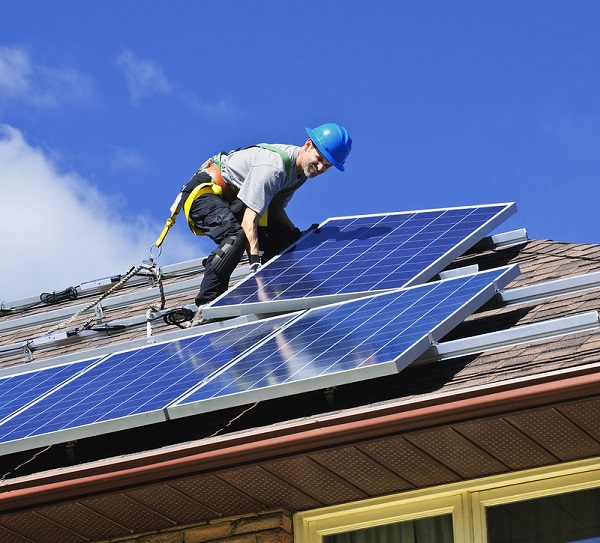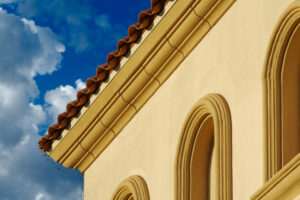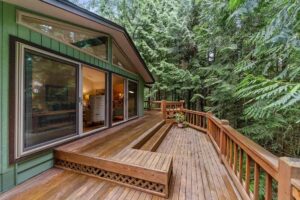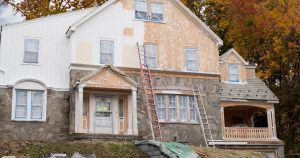The Push For More Sustainable Living in Edmonton, AB

As the global population grows, the need for sustainable living spaces for the people inhabiting this beautiful planet rises in unison. Luckily, major developments have been made in the field of sustainable architecture, providing us with the technology needed to create sustainable building solutions.
Here are 3 of the most promising emerging trends in the field of sustainable architecture:
1. Incorporating Efficient Insulation Systems into Your Home’s Design
In the past, one of the largest contributors to environmental damage caused by homes was the lack of efficiency provided by insulation systems. These inferior insulation systems resulted in more energy being required to bring the temperature of your home up to a comfortable level and to keep it there.
In fact, it is not uncommon for homes equipped with traditional insulation systems to lose up to 35% of their heat through exterior walls. For homes heated by natural gas, that’s 35% more fossil fuels that will need to be burned in order to keep your home at a stable temperature! Not only is this devastating to the environment, but it is also extremely costly.
A more efficient system could help save you hundreds, even thousands of dollars on utility expenses every year.
Thankfully, such a system now exists – Exterior Insulation and Finish Systems (EIFS). These systems combine the latest breakthroughs in insulation technology with efficient materials and strategic design to provide the best insulation capabilities possible. In fact, EIFS’s have been shown to be as much as 84% more efficient when compared to common cladding systems!
Depend Exteriors has provided EIFS installation in Alberta for several years.
2. Using A Renewable Energy Source
It’s no secret that fossil fuels like natural gas have a detrimental effect on the health of our environment. That’s why so much money has been invested over the past decade to research alternative energy sources with less harmful effects. One of the most popular is solar energy.
Solar energy works by trapping the sun’s energy (photons) and converting it to usable electrical energy that can be used for various purposes within your home. But in order to do so, first, your home must be equipt with a mechanism to catch the sun’s rays – solar panels.
Solar panels are becoming increasingly popular for home and business owners alike because of the potential savings (both $ and energy) that they can provide.
This explosion of interest in the application of solar energy for electricity is likely a result of two developments that have occurred in recent years. First, improvements in technology have provided consumers with an affordable means to equip their homes or businesses with solar infrastructure. Second, as the condition of the environment continues to degrade, more people are beginning to realize the importance of sustainable energy alternatives.
One of the best things about solar energy is the potential cost savings. While still relatively expensive to install, solar panels can greatly reduce your monthly electricity bill and pay for themselves within a certain amount of time. Also, the government offers rebates and tax credits to those who make a point of “going solar” because they want to encourage this behavior among consumers.
3. A Shift Towards Efficient Home Building Materials
The materials you use to build the physical structure of your home can also have a huge impact on environmental sustainability. For example, instead of using wooden frames for your house, there has been a shift towards recycled steel. According to some home improvement website, the average home uses about 40-50 trees throughout the building process. That’s 40-50 fewer trees out there to filter CO2 from our air and produce clean oxygen.
Alternatively, just 6 scrap cars provide enough recycled steel to construct the structural framing of an average size house. Also, this steel will last longer and provide a stronger frame when compared to traditional wood beams.
Another building material that has generated a lot of interest of late is industrial hemp. Hemp is a member of the Cannabis plant family. Unlike its distant relative, marijuana, hemp is non-psychoactive and therefore cannot be smoked. Rather, hemp is known for its durability and structural integrity when used as a building material. For instance, hemp can be used to create something called hempcrete – a strong, lightweight, environmentally-friendly alternative to traditional concrete.
But that’s not the only way hemp can be used as a building material. Hemp fiber can also be bonded together into sheets and used as an effective form of insulation. The oils in hemp seeds are even a common non-toxic ingredient that can be used for deck stains and finishes!
Watch For These Trends To Grow Into the Future…
It’s safe to say, the sustainable building movement is here to stay and developments in technology will only contribute to its momentum as we move forward into the future. Many companies are making the responsible choice and have decided to provide sustainable building alternatives for their customers.
Depend Exteriors has been providing the Edmonton, Calgary, Red Deer and the greater Alberta area with sustainable building systems for years. To learn more about how their Exterior Insulation and Finish Systems can help protect the environment while saving you money, please visit their website today!



